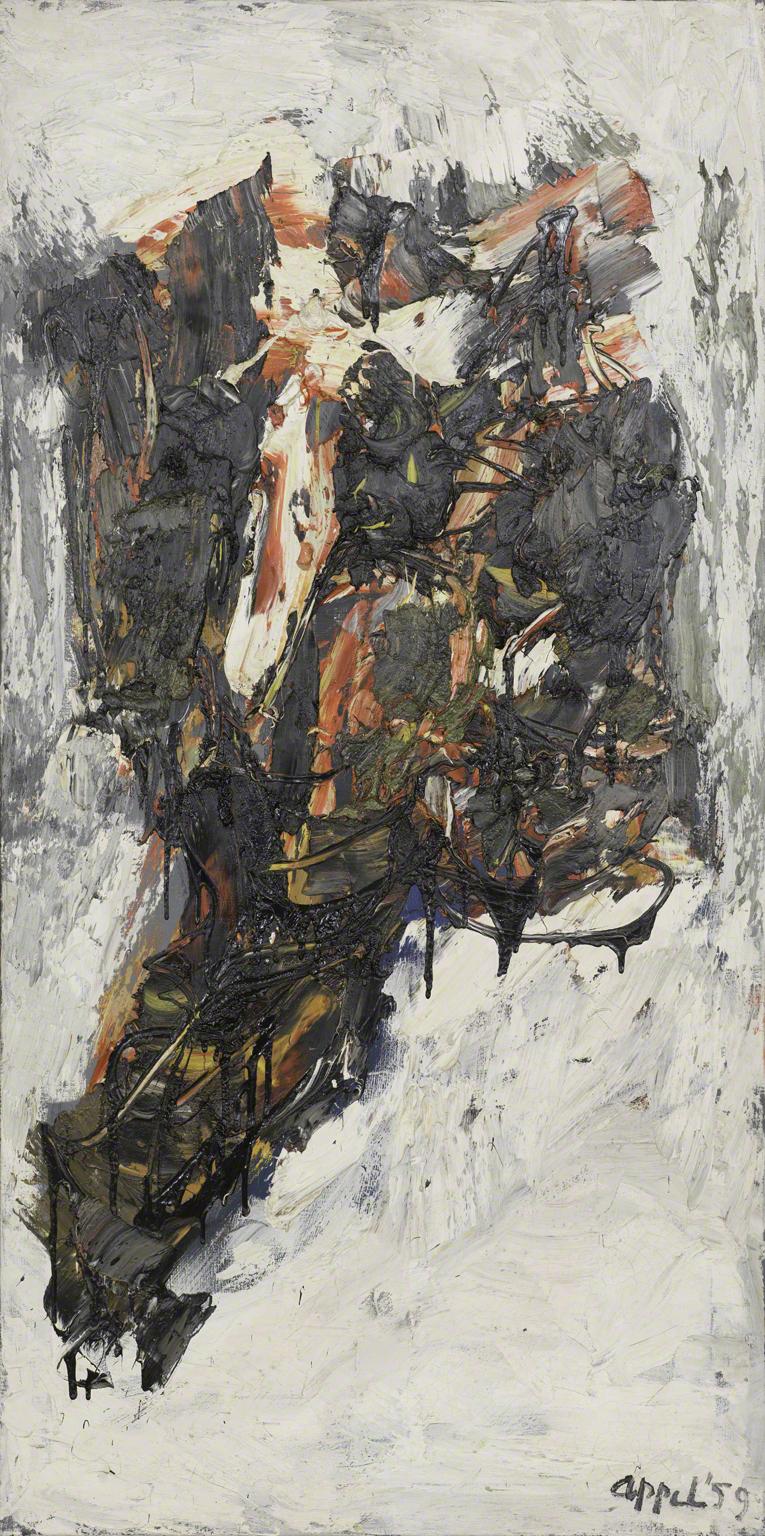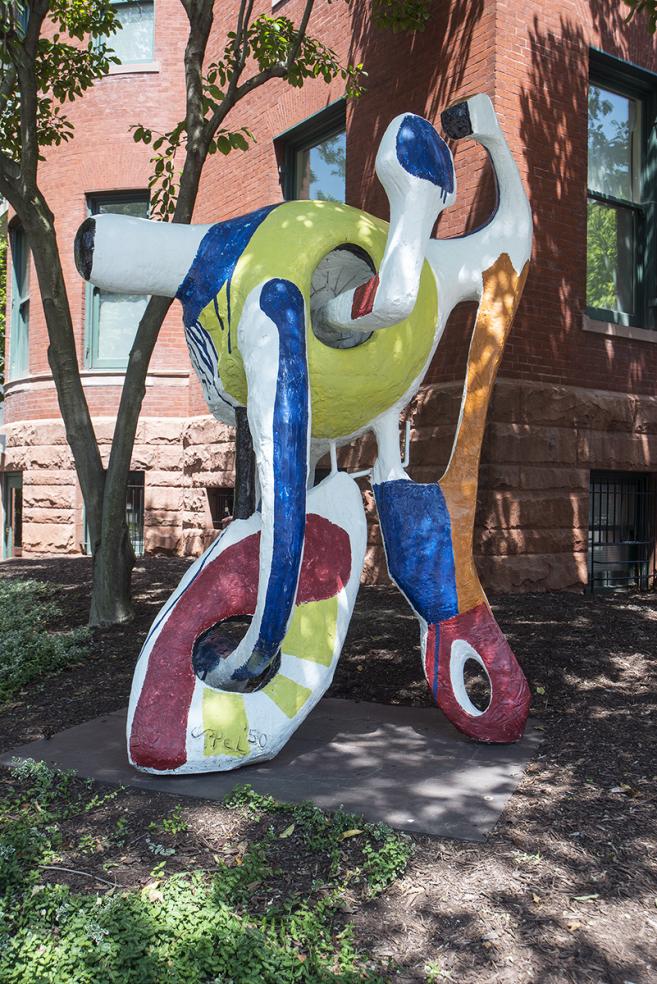Tête comme un arbre (Head as a Tree)
Karel Appel ( 1959 )

Karel Appel’s Head as a Tree might bring to mind certain paintings of the 1980s and 1990s by Georg Baselitz or Markus Lüpertz, but it was painted in 1959. At the time, Appel was at the peak of his international fame. Of Dutch origin, he had been living in Paris since 1950, where he had moved as a member of the international avant-garde group CoBrA. The Elephant, also in The Phillips Collection, is based on a small plaster sculpture made the same year, belonging to a group of sculptures of the artist’s CoBrA period.
Moving to Paris seemed natural for an ambitious artist: the city was still considered the international capital of modern art. The CoBrA group dissolved in 1951, however, and of all its members, only Appel succeeded in his international breakthrough from Paris— as an artist associated with art informel.[1] Michel Tapié, the French art impresario who coined the term, included Appel in his pathbreaking show Un art autre (1952). He also brought important collectors, museum directors like James Johnson Sweeney, and the gallerist Martha Jackson to Appel’s studio. Starting with his first visit to New York on the occasion of his second show at Martha Jackson Gallery in 1957, Appel spent some time in the United States every year. As far as the Parisian art world was concerned, he had “disappeared” to America,[2] while in fact his main home remained Paris; when in the United States, he would routinely introduce himself as a European painter living in the French capital.[3] In a sense, he belonged to everywhere and to nowhere. This might be considered a handicap, but it certainly played out to his advantage when New York took over from Paris as the international art capital.
An avid observer, Appel took his inspiration from what he saw in the streets and from what was going on in the international art world. The Phillips’s Woman with Flowers No. 1 obviously took inspiration from nouveau réalisme, the French version of pop art. Always on his guard against getting stuck in a particular style, Appel made painterly experiments that could take him far afield—an example being Landscape with Wheel (The Phillips Collection). Constructed from small, repetitive brushstrokes, this painting is representative of Appel’s quite atypical style of around 1980, which was originally inspired by an extreme enlargement of a detail from a Van Gogh painting.[4]
Continuing to live in Europe and in the United States, Appel kept on the move until an advanced age—from the 1990s on— between five studios on both sides of the Atlantic. He died on May 3, 2006, in Zurich, and is buried at the Pere Lachaise cemetery in Paris.
1. This was Markus Lüpertz’s perception in the early 1960s, as stated in an interview that I conducted with him. Franz W. Kaiser, Markus Lüpertz—In’t God’lijk Licht/In Divine Light (The Hague: Gemeentemuseum, 2011), 33.
2. Testimony of Michel Ragon, whom I interviewed for Franz W. Kaiser, Appel Retrospective
3. Cathérine van Houts, Karel Appel—de biografie (Amsterdam: Uitgeverij Contact, 2000), 239.
4. Information provided by the artist.
Text by Franz W. Kaiser, adapted from Seeing Differently: The Phillips Collects for a New Century (The Phillips Collection in association with Giles, 2021)
